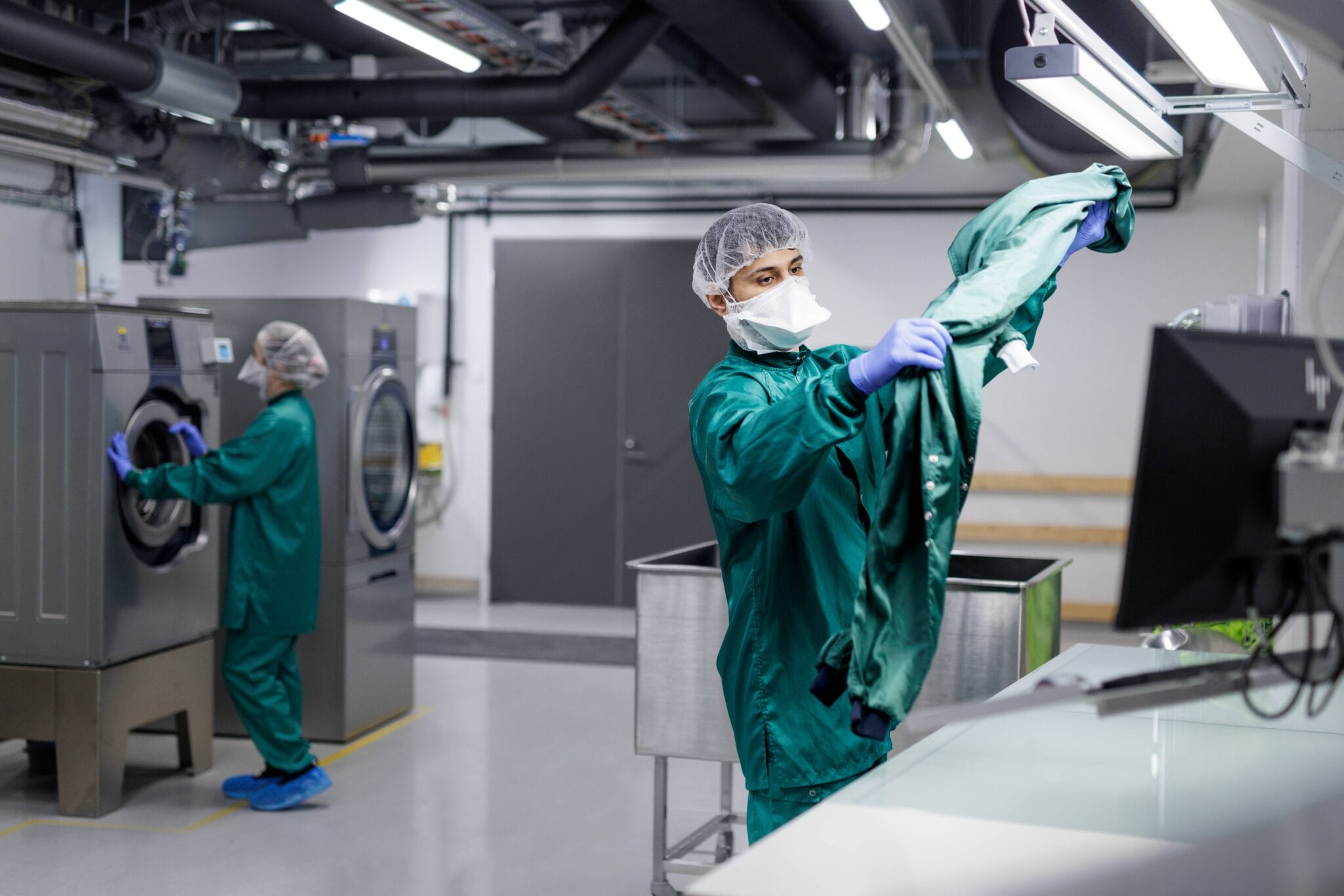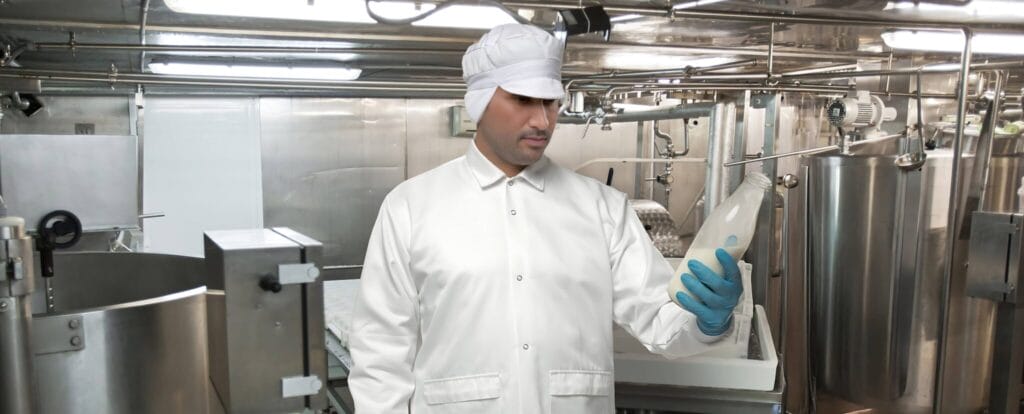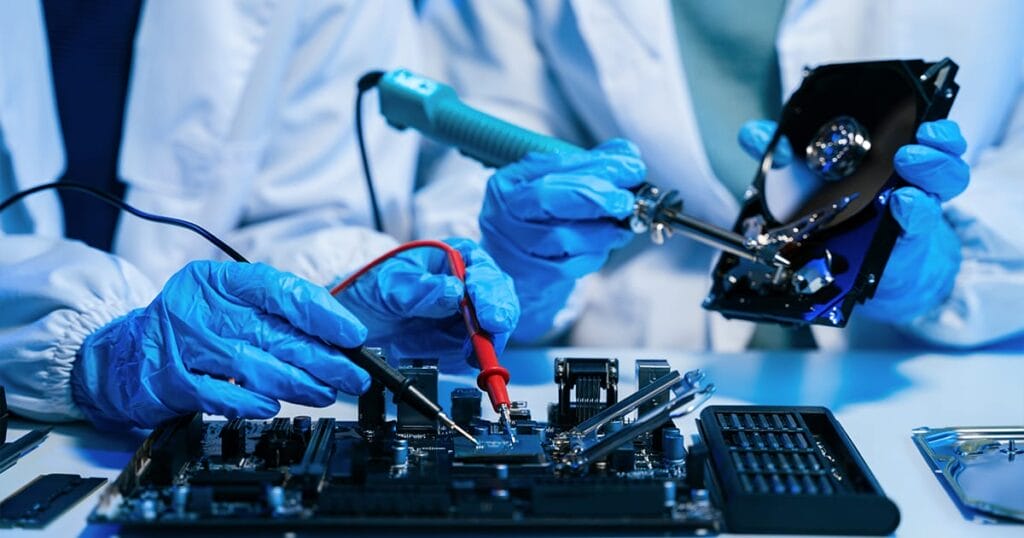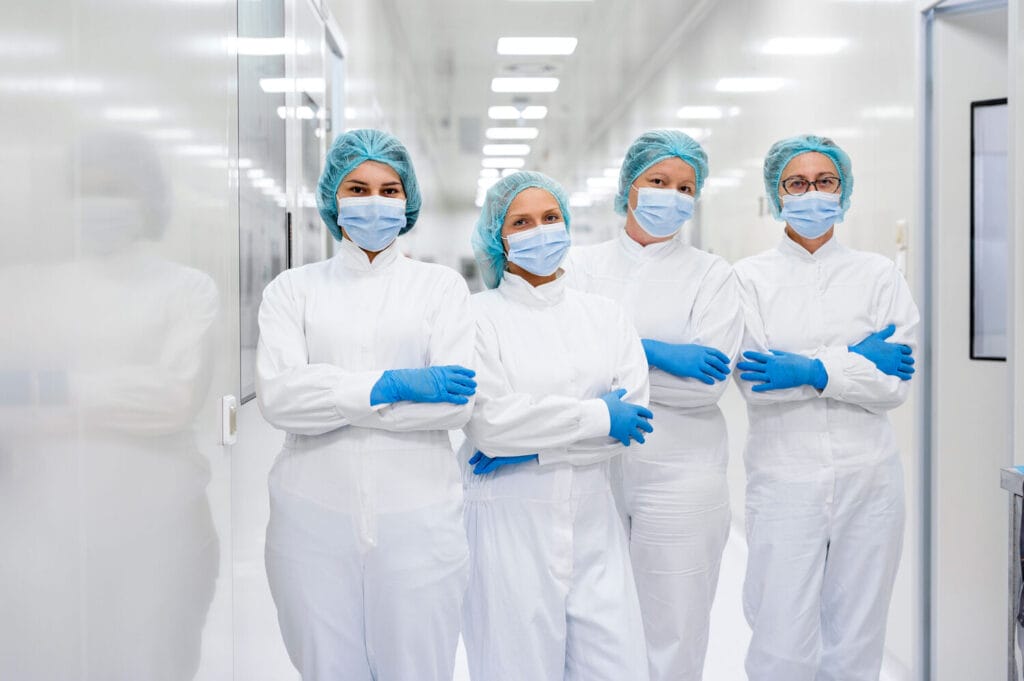
Sustainable Practices in Cleanroom Operations
In the tightly controlled world of pharmaceutical manufacturing, cleanrooms represent environments where contamination control is paramount. Historically, these critical spaces have been resource-intensive, with significant environmental footprints stemming from energy consumption, water usage, and waste generation.
Today, leading pharmaceutical manufacturers are discovering that operational excellence and environmental responsibility can work in tandem, creating cleaner, greener cleanroom operations without compromising product quality or regulatory compliance. This article explores how implementing sustainable practices in cleanroom operations can reduce environmental impact while maintaining the strict standards required for pharmaceutical manufacturing.
Why sustainability matters in cleanroom environments?
The pharmaceutical industry faces increasing pressure to reduce its environmental impact while maintaining stringent cleanroom certification requirements. This pressure stems from multiple sources: regulatory bodies introducing stricter environmental guidelines, investors demanding robust ESG (Environmental, Social, Governance) performance, and consumers becoming more environmentally conscious in their purchasing decisions.
Sustainability in cleanroom environments is no longer optional but a competitive necessity that delivers multiple business benefits:
- Reduced operational costs through lower energy and water consumption
- Enhanced regulatory compliance as environmental regulations tighten globally
- Improved corporate reputation and stronger stakeholder relationships
- Future-proofed operations against resource scarcity and price volatility
- Alignment with the UN Sustainable Development Goals
For pharmaceutical manufacturers, particularly those operating at scale, balancing sustainability with cleanroom performance requires a systematic approach that addresses environmental concerns without compromising the controlled environment needed for product safety and efficacy.
Common environmental challenges in pharmaceutical manufacturing:
Pharmaceutical cleanrooms face unique sustainability challenges that stem from their fundamental operational requirements. Understanding these challenges is the first step toward implementing effective solutions:
High Energy Consumption
Cleanrooms typically consume 10-100 times more energy per square metre than conventional buildings. This stems from:
- Continuous air filtration and handling systems
- Precise temperature and humidity controls
- Stringent lighting requirements
- 24/7 operational schedules
Excessive Water Usage
Water plays a critical role in pharmaceutical manufacturing and cleanroom maintenance:
- Regular cleaning and sanitisation processes
- Laundering of cleanroom garments and textiles
- Water-intensive production processes
- Cooling systems for temperature control
Cleanroom Garment Waste
The management of cleanroom uniform presents significant environmental challenges:
- Single-use disposable garments contributing to landfill waste
- Resource-intensive laundering processes for reusable garments
- Chemical usage in cleaning and sterilisation
- Transportation impacts in garment logistics
Chemical Usage and Waste
Cleanrooms rely on various chemicals for cleaning, disinfection, and process operations:
- Disinfectants and sanitising agents
- Detergents for garment laundering
- Process chemicals and solvents
- Hazardous waste management challenges
Generic drug manufacturers, operating with tighter profit margins, face particular pressure to address these environmental challenges while maintaining cost-effectiveness and compliance with increasingly stringent regulations.
How can cleanrooms reduce their environmental footprint?
Implementing sustainable practices in cleanroom operations requires a multifaceted approach that balances environmental benefits with cleanroom performance requirements. Here are practical strategies pharmaceutical manufacturers can implement:
Energy Efficiency Improvements
- Optimise air change rates based on actual contamination data rather than using conservative default settings
- Install energy-efficient HEPA filtration systems and motors with variable frequency drives
- Implement heat recovery systems to capture and reuse thermal energy
- Use LED lighting with automated controls
- Consider cleanroom zoning to create efficiency between areas requiring different classification levels
Water Conservation Measures
- Install water-efficient cleaning systems and equipment
- Implement water recycling for appropriate applications
- Optimise cleaning validation to reduce water usage without compromising cleanliness
- Partner with specialised cleanroom textile service providers who employ water-efficient laundering processes
Waste Reduction Strategies
- Transition from single-use to reusable cleanroom garments where appropriate
- Implement comprehensive recycling programmes for compatible materials
- Optimise inventory management to reduce expired materials
- Consider lifecycle assessments when selecting cleanroom consumables
For large-scale drug manufacturers, investing in integrated monitoring systems that track resource consumption in real-time can identify optimisation opportunities while maintaining the documentation needed for regulatory compliance.
| Sustainability Initiative | Potential Impact | Implementation Complexity | Regulatory Considerations |
|---|---|---|---|
| Optimised air change rates | 15-30% energy reduction | Medium | Requires contamination risk assessment |
| LED lighting conversion | 50-70% lighting energy reduction | Low | Minimal regulatory impact |
| Reusable garment programme | 70-90% waste reduction | Medium | Requires validation of cleaning process |
| Water recycling systems | 30-50% water reduction | High | Complex regulatory validation |
Sustainable garment solutions for cleanroom operations:
Cleanroom garments represent a significant environmental consideration in pharmaceutical manufacturing. Transitioning to sustainable garment solutions offers substantial environmental benefits while maintaining the contamination control required in these environments.
Reusable vs. Disposable Garments
The industry continues to debate the merits of reusable versus disposable cleanroom garments. From a sustainability perspective, properly managed reusable garment programmes offer significant advantages:
- Reduced waste generation compared to single-use alternatives
- Lower overall carbon footprint over the garment lifecycle
- Decreased resource consumption from repeated manufacturing
- Cost efficiency over time, particularly for high-volume users
Modern cleanroom textiles are engineered to maintain their barrier properties and particle retention capabilities through multiple laundering cycles. As noted in recent industry developments, “reusable cleanroom gowning supplies are increasing because reusable garments are environmentally friendly and cost-effective.”
Advanced Lifecycle Management
Implementing comprehensive lifecycle management for cleanroom garments enhances both sustainability and operational efficiency:
- RFID tracking systems to monitor garment usage and laundering history
- Scheduled inspection and repair programmes to extend garment lifespan
- End-of-life recycling initiatives for textiles that can no longer meet cleanroom standards
- Data-driven inventory optimisation to reduce overproduction
Specialty pharmaceutical manufacturers, with their complex production processes and higher margins, can particularly benefit from integrated garment management systems that provide documentation of garment history for audit purposes while optimising environmental performance.
Energy and water efficiency in validated processes:
Improving energy and water efficiency in validated cleanroom processes presents unique challenges due to regulatory requirements. However, several approaches can reduce resource consumption without compromising validation:
Energy-Efficient Cleanroom Design
Incorporating energy efficiency from the design phase offers the greatest potential impact:
- Right-sizing air handling systems based on actual contamination control needs
- Implementing fan-filter units with high-efficiency motors
- Designing modular cleanrooms that can adapt to changing production requirements
- Using computational fluid dynamics to optimise airflow patterns
Optimised Cleanroom Garment Processing
The laundering and sterilisation of cleanroom garments consume significant resources:
- Water-efficient washing processes that maintain cleanliness standards
- Energy-efficient drying and sterilisation methods
- Validation approaches that balance resource efficiency with contamination control
- Local processing facilities to reduce transportation impacts
Implementing these improvements requires a validation approach that documents how the sustainable practices maintain or enhance the cleanroom’s performance against cleanroom certification requirements. This validation is essential for regulatory compliance and should be planned from the earliest stages of sustainability initiatives.
Lindström’s circular approach to cleanroom textiles:
Lindström’s approach to cleanroom textile services in India exemplifies how circular economy principles can be applied to pharmaceutical manufacturing environments. Their model addresses multiple sustainability challenges while ensuring compliance with stringent cleanroom requirements.
Digital Tracking and Optimisation
Lindström employs advanced digital solutions to enhance sustainability:
- RFID technology to track individual garments throughout their lifecycle
- Data analytics to optimise inventory levels and reduce overproduction
- Digital documentation that supports compliance with Annex 1 requirements
- Real-time monitoring of laundering processes to maximise efficiency
Resource-Efficient Processing
Their specialised laundering facilities incorporate numerous sustainability features:
- Water recycling systems that reduce freshwater consumption
- Energy-efficient washing and drying equipment
- Optimised chemical dosing to minimise environmental impact
- Validated processes that maintain cleanroom standards with reduced resource use
Localised Service Network
By establishing processing facilities close to pharmaceutical manufacturing clusters, Lindström reduces transportation impacts:
- Shortened delivery routes reducing carbon emissions
- More responsive service reducing excess inventory requirements
- Local employment opportunities supporting community sustainability
This circular approach provides pharmaceutical manufacturers with documented environmental benefits while maintaining the contamination control needed for cleanroom operations. As one industry expert notes, “The benefits of using specialist cleanroom laundry services exceed the challenges of maintaining cleanroom attire by a significant margin.”
Implementing sustainability without compromising compliance:
For pharmaceutical manufacturers, implementing sustainable practices in cleanroom operations requires a structured approach that maintains regulatory compliance while delivering environmental benefits.
Strategic Implementation Framework
- Assessment: Audit current cleanroom operations to identify environmental impacts and improvement opportunities
- Prioritisation: Rank initiatives based on environmental benefit, compliance impact, and implementation feasibility
- Validation Planning: Develop validation protocols that demonstrate how sustainability improvements maintain or enhance cleanroom performance
- Pilot Implementation: Test initiatives in controlled environments to gather performance data
- Documentation: Create comprehensive documentation linking sustainability practices to regulatory requirements
- Scaling: Implement successful initiatives across facilities with appropriate validation
- Continuous Improvement: Monitor performance and iterate for ongoing optimisation
Compliance Considerations
When implementing sustainability initiatives, pharmaceutical manufacturers must address specific regulatory considerations:
- Documenting how changes impact contamination control effectiveness
- Ensuring traceability of cleanroom garments and materials
- Maintaining validation of critical processes despite efficiency improvements
- Addressing cleanroom certification requirements throughout sustainability initiatives
By approaching sustainability as a complementary goal to compliance rather than a competing priority, pharmaceutical manufacturers can achieve both objectives. As noted by cleanroom experts, “Considering Annex 1 and its implications with respect to contamination control strategies, garments become the frontline barrier for contamination control.”
Return on Investment Considerations
Sustainable practices in cleanroom operations typically deliver both environmental and financial benefits:
- Reduced utility costs through energy and water efficiency
- Lower waste management expenses
- Extended equipment lifecycles through optimised operations
- Enhanced brand value and stakeholder relationships
- Improved regulatory positioning as environmental requirements increase
These financial returns can help justify the initial investment in sustainability initiatives, particularly for generic drug manufacturers operating with tighter margins.
Conclusion:
Implementing sustainable practices in cleanroom operations represents both a responsibility and an opportunity for pharmaceutical manufacturers. By addressing energy consumption, water usage, waste generation, and resource efficiency, companies can significantly reduce their environmental footprint while maintaining the stringent contamination control required for product quality and patient safety.
The transition to more sustainable cleanroom operations requires a systematic approach that balances environmental goals with regulatory compliance. Through careful planning, validation, and documentation, pharmaceutical manufacturers can implement improvements that deliver both environmental and operational benefits.
As the industry continues to evolve, sustainability will become an increasingly important factor in cleanroom design and operation. Those manufacturers who proactively address these challenges will be better positioned to meet regulatory requirements, control costs, and fulfil their environmental responsibilities while continuing to deliver life-saving medications to patients worldwide.
Partner with textile service providers who understand the unique requirements of pharmaceutical cleanrooms to implement sustainable practices that maintain compliance while reducing environmental impact. Through collaborative approaches and circular economy principles, the industry can achieve cleaner, greener cleanroom operations that benefit both business and planet.




